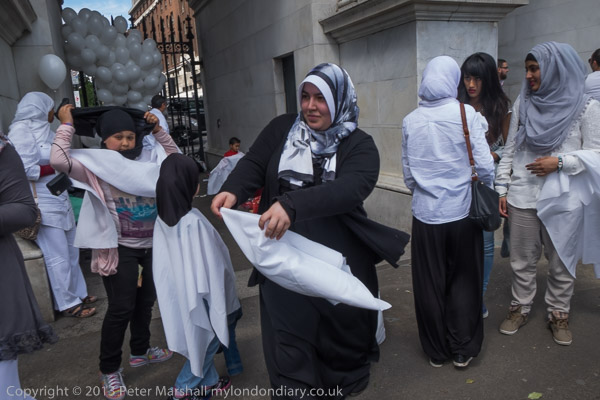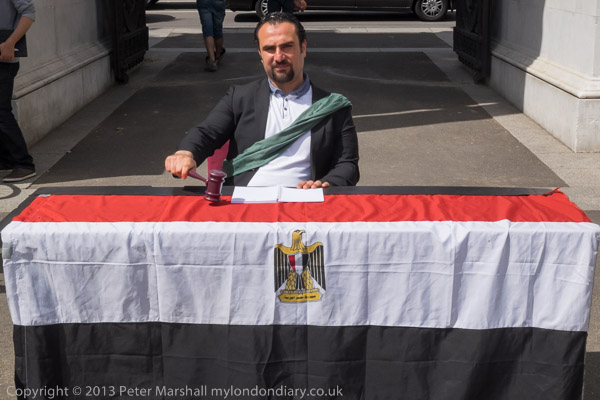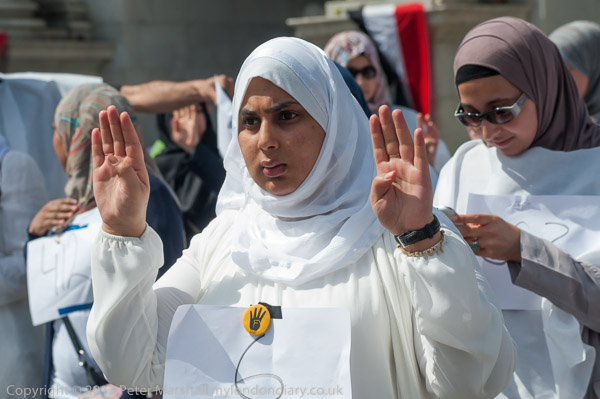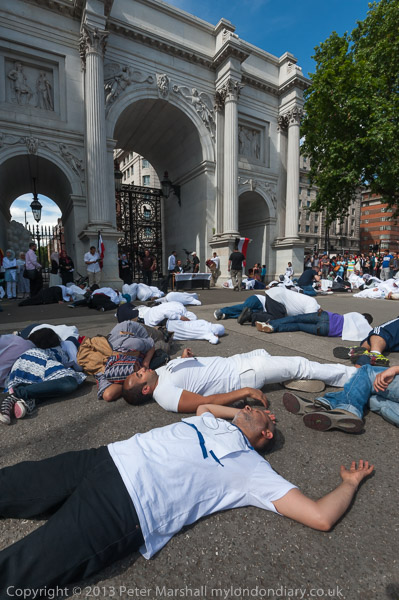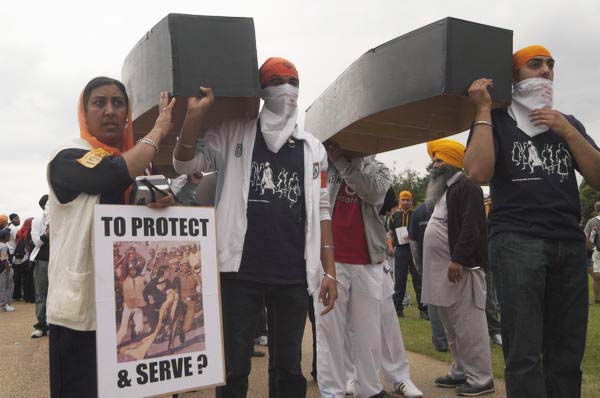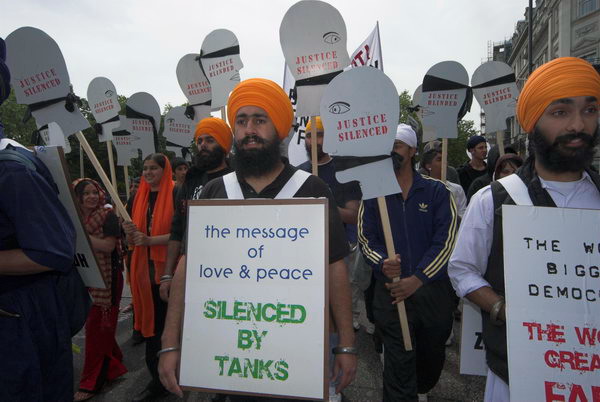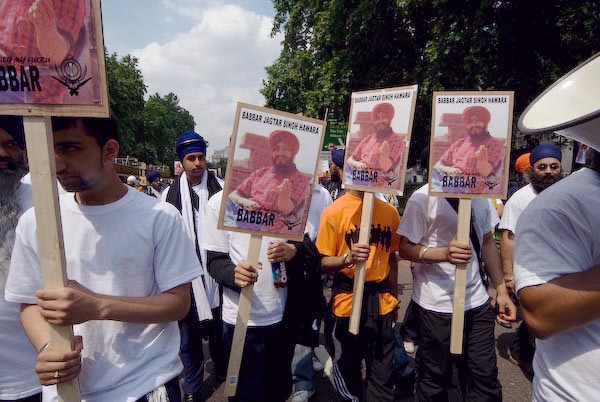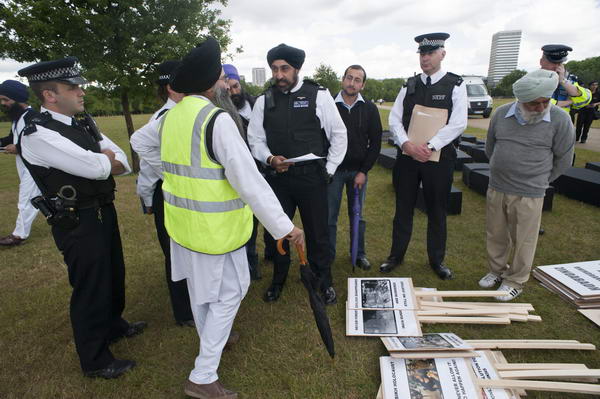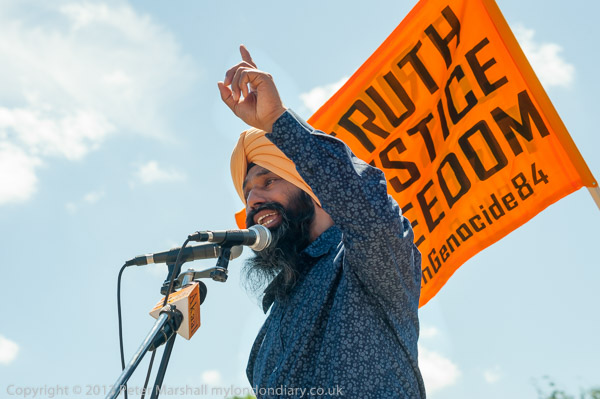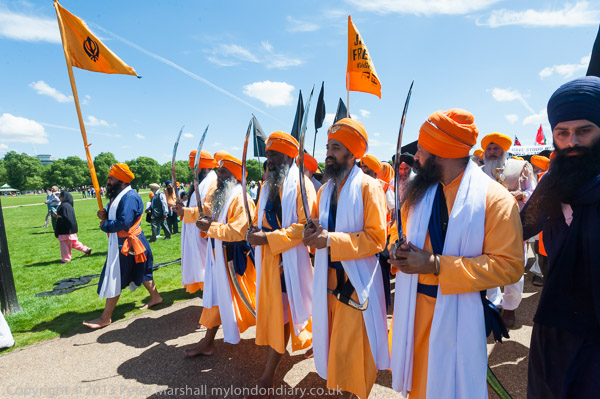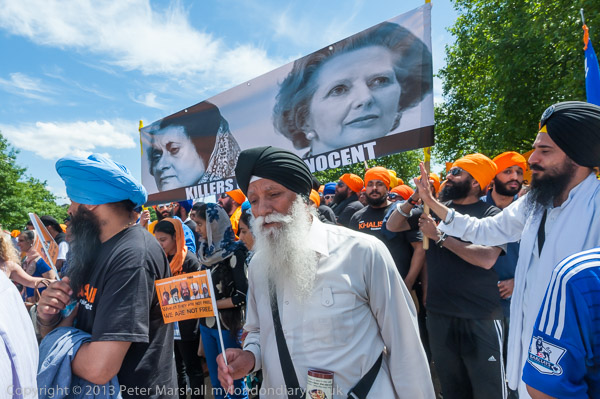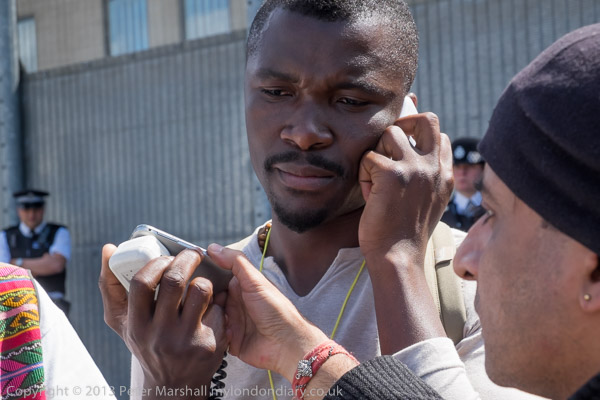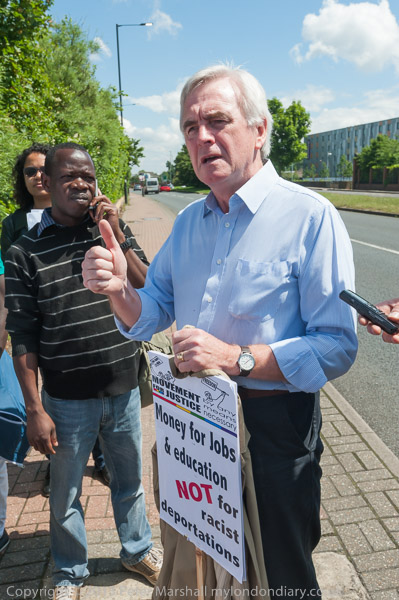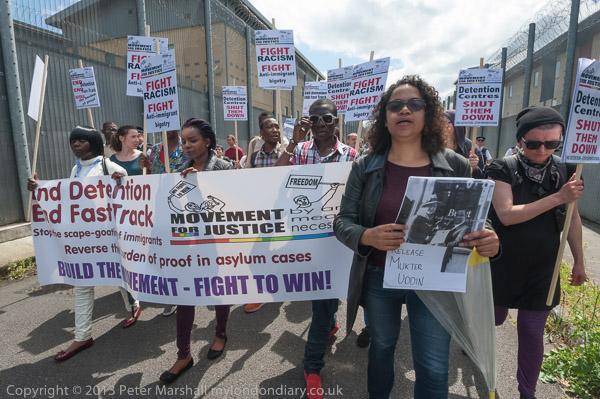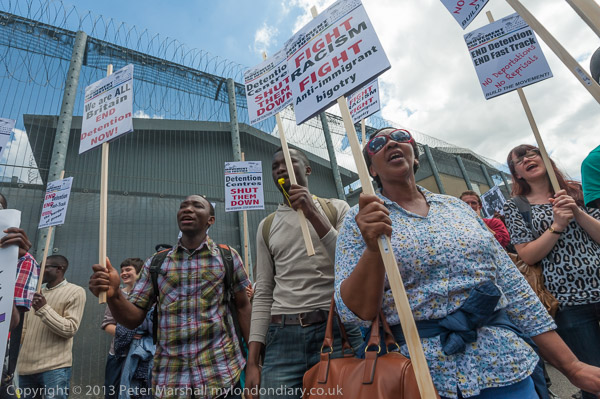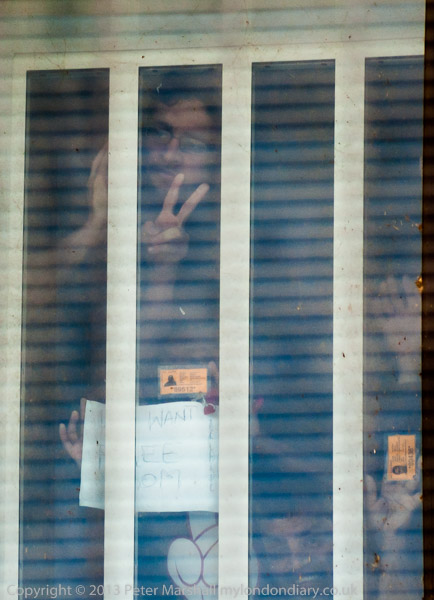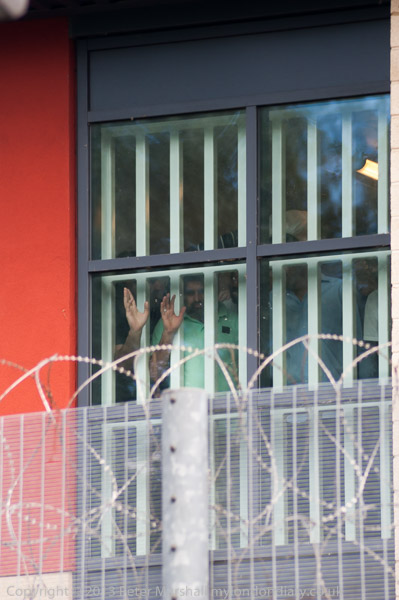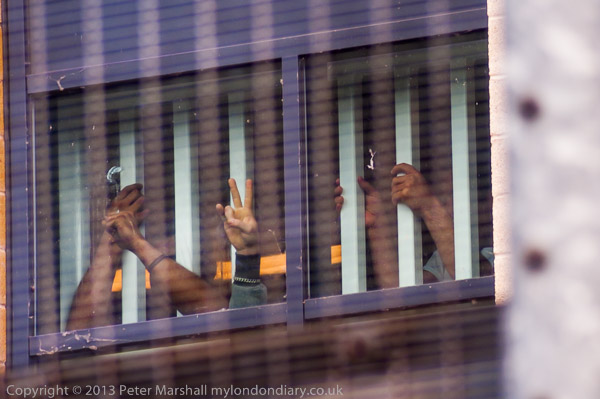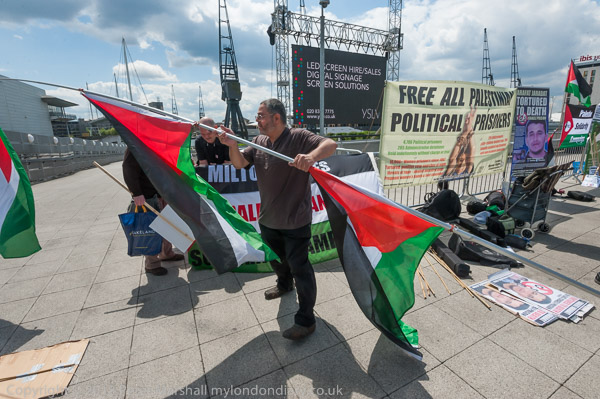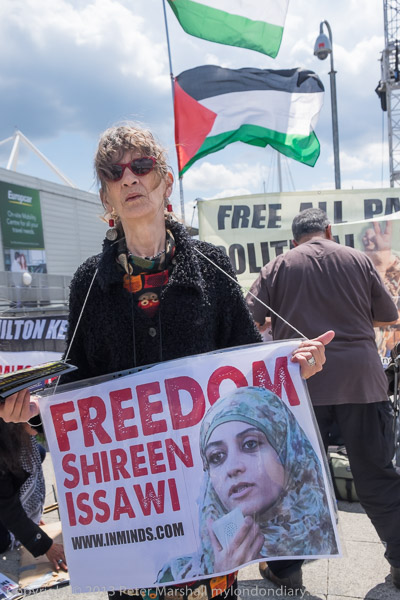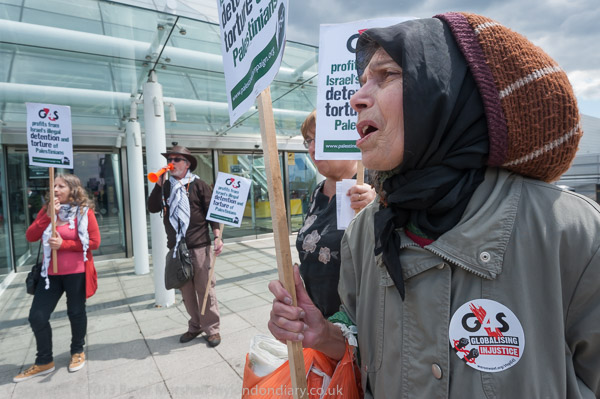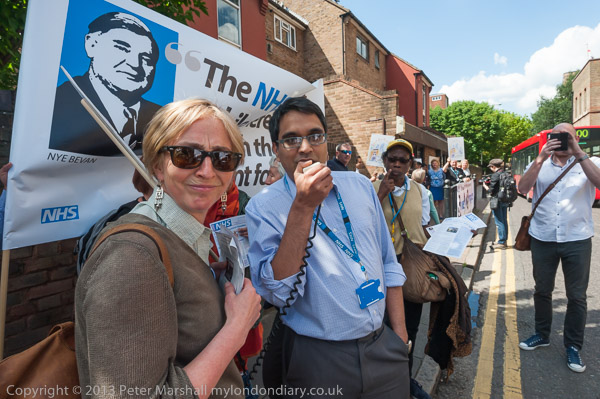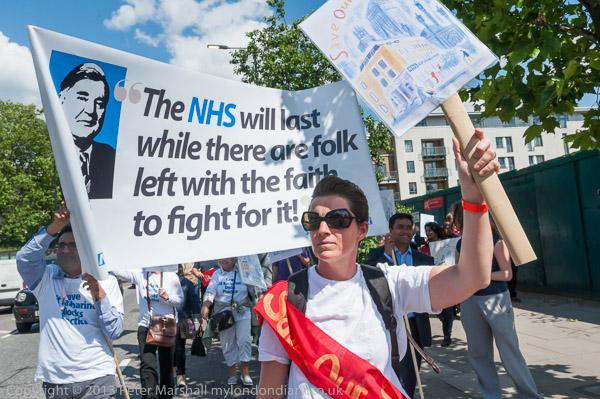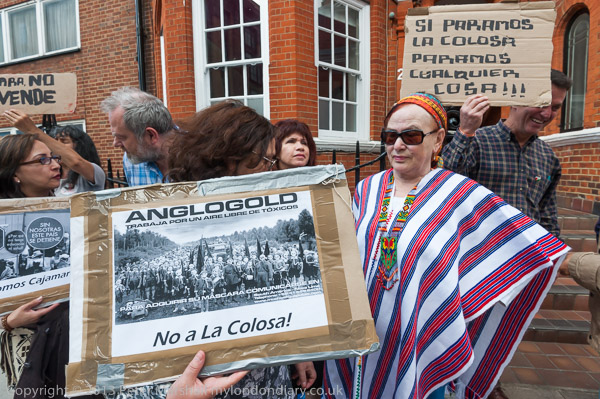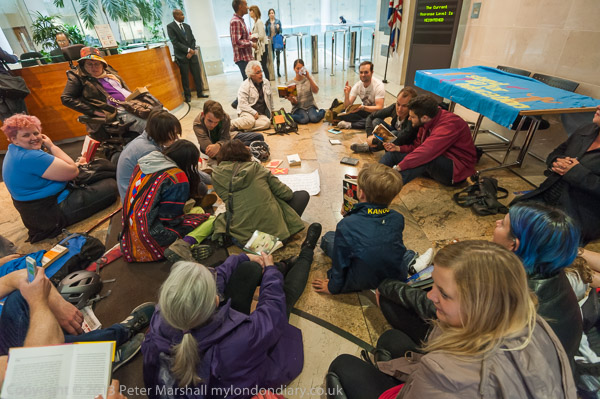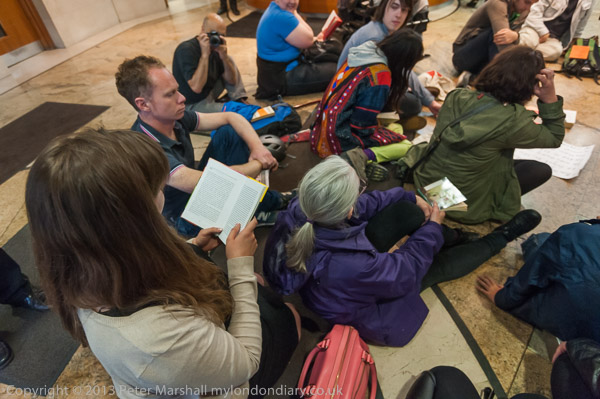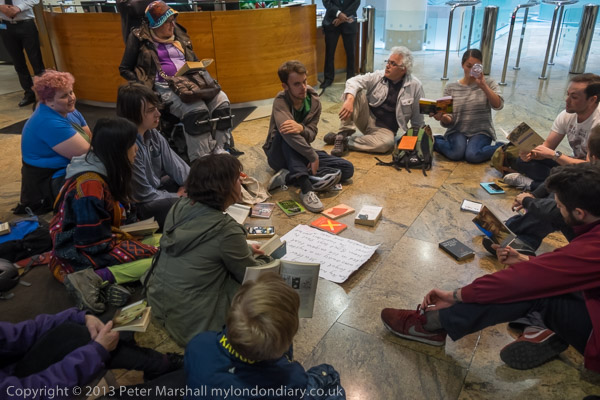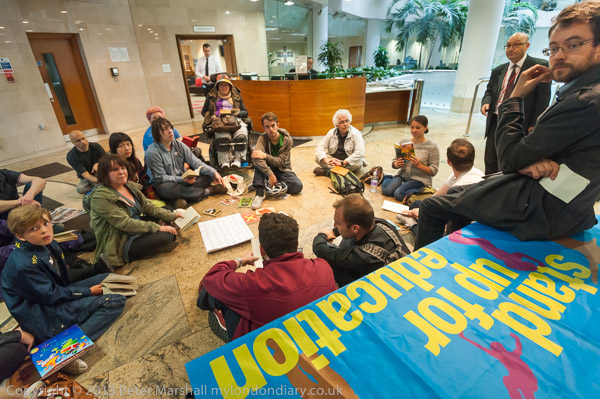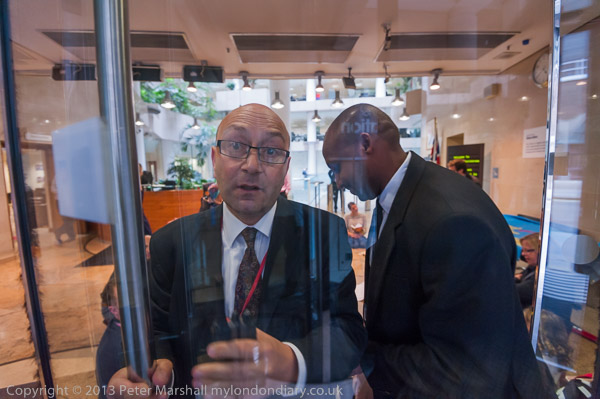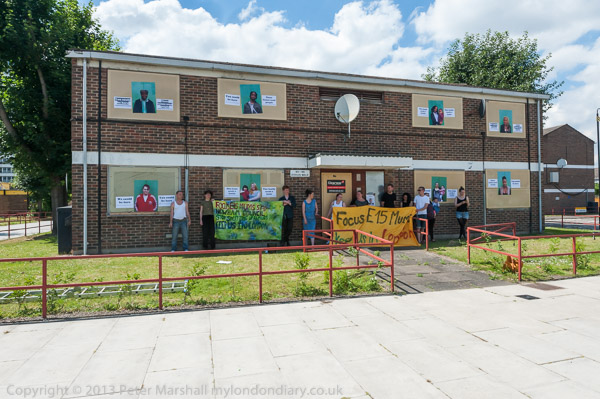
Most of the posters were put up on this one building, though others around were empty too
It’s always interesting when different stories I’ve been following come together. I first got to know the Carpenters Estate when I was photographing around the River Lea and the navigation and back rivers in the 1980s, though I don’t recall actually taking pictures as I walked through. It wasn’t really the kind of subject matter that particularly interested me at the time – a quiet, well planned and solidly built post-war council estate with three point blocks – that just happened to be on my route to and from Stratford station.
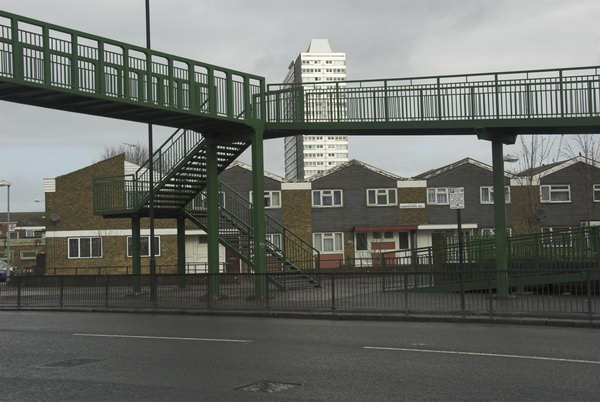 Carpenters Estate, 2007
Carpenters Estate, 2007
I photographed a few things around its edges – the footbridge over the railway became a part of my Greenwich Meridian project (along with the then new Stratford Bus station) in the 1990s, along with the deserted rivers and canals and pockets of thriving industry to the north and west.
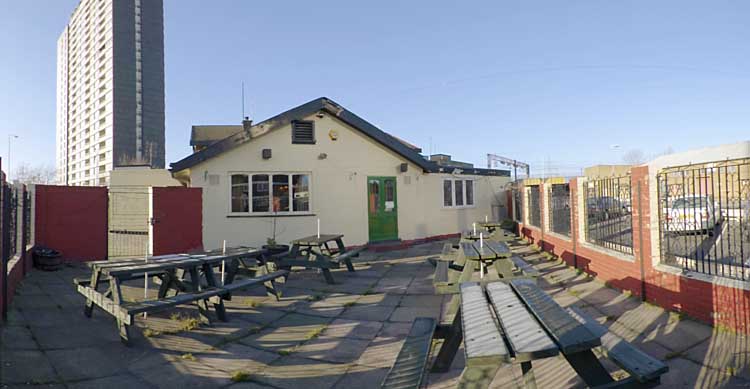 Pub garden on Carpenters Estate, 2005
Pub garden on Carpenters Estate, 2005
If one had wanted a textbook example of a council estate that worked and that people were happy to live on, this would have served. But in the early years of this century things changed dramatically. Newham got involved with the London Olympic bid, and suddenly this large area on the Olympic fringe became for the council a very desirable investment opportunity rather than a successful social housing.
Of course they had to find a reason for wanting to close the estate. Like everything else built in the 1960s, the buildings – and particularly the point blocks – contained asbestos. Mostly of course this remains entirely safe unless disturbed (I write looking out over an asbestos roof.) But it was a good enough excuse, and with a report saying it was too expensive to remove it, they started the process of clearing out tenants from the estate.
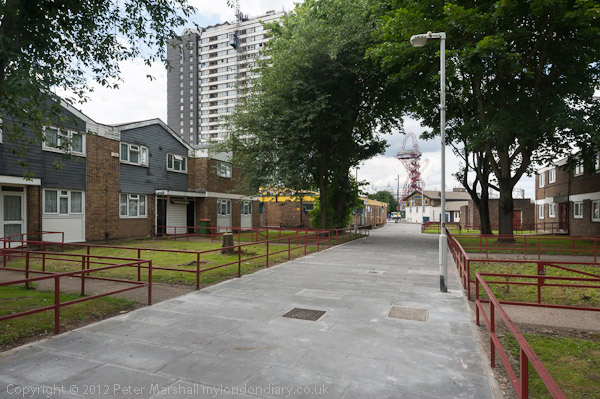
Good solid 1960s housing on a pedestrianised street on this popular estate
Most if not all the tenants were persuaded in various ways to leave, but many of the residents had taken advantage of the ‘right to buy’ and were (and are) keen to stay on. Residents formed an action group and were active in the estate tenants management organisation – until the council rigged the elections to this and disqualified most of them. So the estate has now had perfectly sound, safe properties empty and sealed up, some now empty for eight years, while Newham has one of the largest housing problems in London.
Newham Council’s next plan was to sell the whole area to University College London for a new campus, possibly retaining some of the large buildings for student residences. And somehow, magically, it became possible to clean out that asbestos.
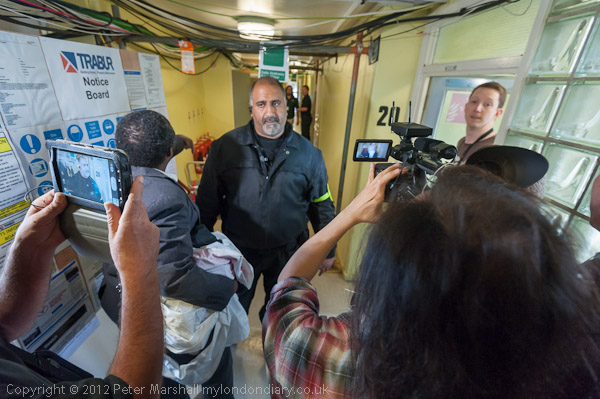
I take pictures of a BBC security man blocking our access from the back of a lift on the 20th floor
I came back to Carpenters just before the Olympics for a tour organised by local residents in Carpenters Against Regeneration Plans (CARP), which ended with a farce as security men employed by the BBC attempted to refuse residents (and their guests including myself) entry to tower block Lund Point where the BBC were using some empty flats for their Olympic coverage. At first police and PCSOs supported the BBC, but later more senior officers told the BBC heavies they had to let us in. We had another fight with them to get to visit a second flat on the 20th floor.
Now, thanks in part to protests by students and academics as well as local opposition, the UCL plan has fallen through, and the council for the moment appears to be allowing some short-term tenancies on the estate, probably before selling parts off for piece-meal private development.
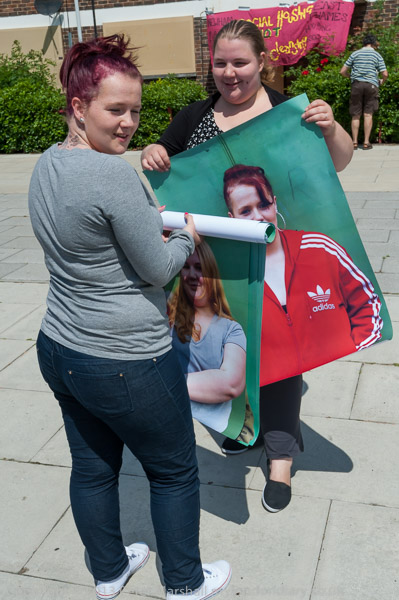
Sam and Jasmine of Focus E15 Mums unroll large posters of Jasmine and Sam
Meanwhile many in Newham are desperate for housing and unable to afford the increasingly stratospheric prices and rents being asked for the new properties being built by private developers, selling mainly to wealthy employees in the City, a short train or bus ride away. Newham residents are being forced out of the area – the poor are no longer welcome in the borough.
Among those the council has tried to force out are a small group of mothers and children who were living in the Focus E15 hostel, who got together after being told they were to be evicted and stood up and fought when they found the council wanted to send them away to Birmingham and elsewhere, away from families, jobs, courses and support.
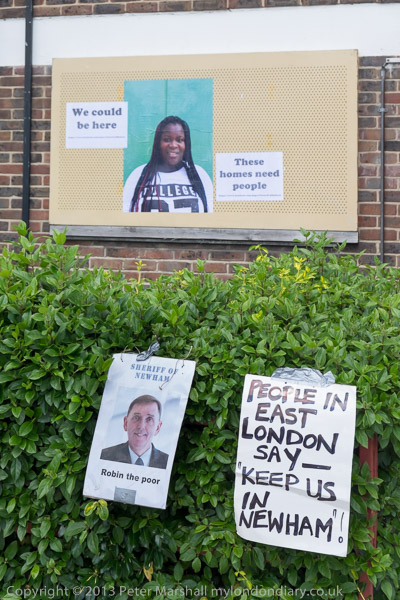
Mayor of Newham Robin Wales on a poster ‘Sheriff of Newham – Robin the poor’.
Their lively campaign has horrified Newham councillors and inspired many others in housing need, and has become a much more general campaign against what they describe as ‘social cleansing’. The E15 mums and others on Newham’s housing lists would love to be rehoused in the empty properties on the Carpenters estate (or other empty council properties in the area) and came to make that point, bringing photographs of themselves and their children along with other posters and paste.
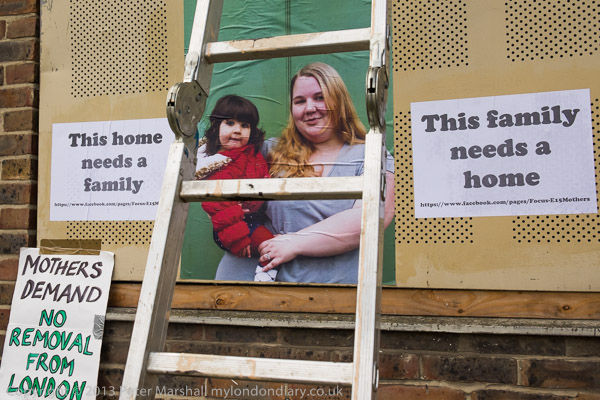 Jasmin and her daughter look out from a poster.
Jasmin and her daughter look out from a poster.
I photographed them putting up the posters on empty properties surrounding a square on the estate, where they were joined by a few residents and former residents. One of them lent them a ladder so they could put up posters on the first floor too. The posters speak for themselves – and it wasn’t very long after the protest before the council, annoyed by the publicity, sent workmen along to take them down.
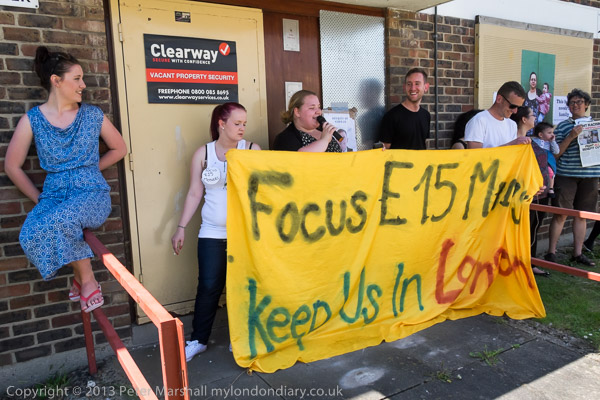
Photographically I had a problem. Overall images – like that at the top of this post – left the posters and banners too small to read in any size likely to be used in a newspaper or magazine, and I found the red railings in front of the block too obtrusive, but I didn’t really manage to find another single image that represented the protest. There were quite a few pictures that I liked, but I did rather feel I had failed to solve the problem. See for yourself at Focus E15 Mums Expose Carpenters Estate.
